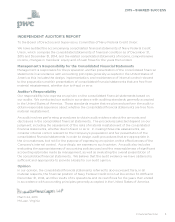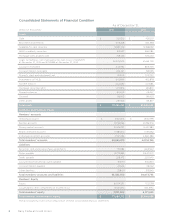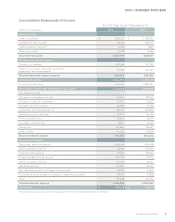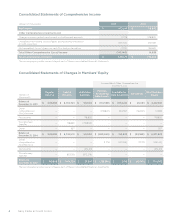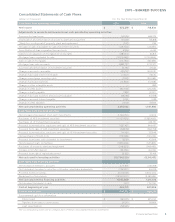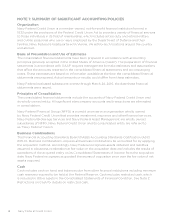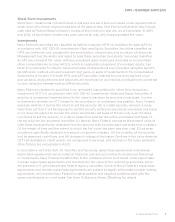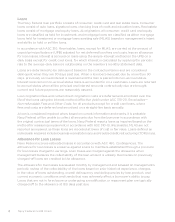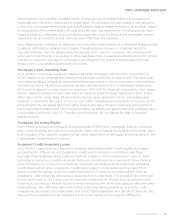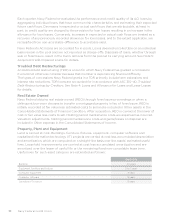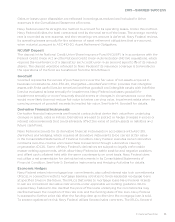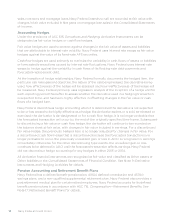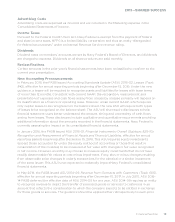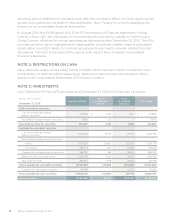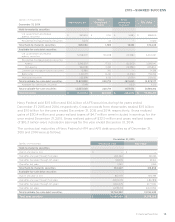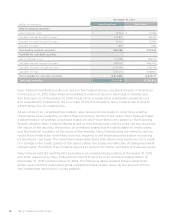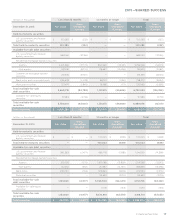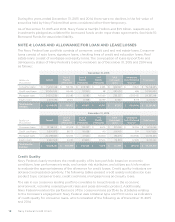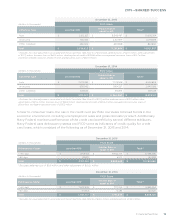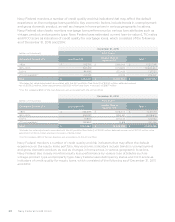Navy Federal Credit Union 2015 Annual Report Download - page 29
Download and view the complete annual report
Please find page 29 of the 2015 Navy Federal Credit Union annual report below. You can navigate through the pages in the report by either clicking on the pages listed below, or by using the keyword search tool below to find specific information within the annual report.
Navy Federal Credit Union10
Each quarter, Navy Federal re-evaluates the performance and credit quality of its ACI loans by
aggregating individual loans that have common risk characteristics and estimating their expected
future cash flows. Decreases in expected or actual cash flows that are attributable, at least in
part, to credit quality are charged to the provision for loan losses resulting in an increase in the
allowance for loan losses. Conversely, increases in expected or actual cash flows are treated as a
recovery of any previously recorded allowance for loan losses, and to the extent applicable, are
reclassified from non-accretable dierence to accretable yield.
Navy Federal’s ACI loans are accounted for in pools. Loans deemed uncollectible on an individual
basis remain in the pool and are not reported as charge-os. Disposals of loans, whether through
sale or foreclosure, result in the loan’s removal from the pool at its carrying amount. See Note 5:
Acquired Credit-Impaired Loans for details.
Troubled Debt Restructurings
A troubled debt restructuring (TDR) is a loan for which Navy Federal has granted a concession
it would not otherwise consider because that member is experiencing financial diculty.
The types of concessions Navy Federal grants in a TDR primarily include term extensions and
interest rate reductions. TDR loans are accounted for in accordance with ASC 310-40, Troubled
Debt Restructurings by Creditors. See Note 4: Loans and Allowance for Loans and Lease Losses
for details.
Real Estate Owned
Navy Federal obtains real estate owned (REO) through foreclosure proceedings or when a
delinquent borrower chooses to transfer a mortgaged property in lieu of foreclosure. REO is
initially recorded at fair value less estimated costs to sell and is included in Other assets in the
Consolidated Statements of Financial Condition. After acquisition, REO is carried at the lower of
cost or fair value less costs to sell. Holding period maintenance costs are expensed as incurred.
Valuation adjustments, holding period maintenance costs and gains/losses on disposal are
included in Other expense in the Consolidated Statements of Income.
Property, Plant and Equipment
Land is carried at cost. Buildings, furniture, fixtures, equipment, computer software and
capitalized information technology (IT) projects are carried at cost less accumulated depreciation
and amortization, which are computed on a straight-line basis over the assets’ estimated useful
lives. Leasehold improvements are carried at cost less accumulated amortization and are
amortized over the lesser of useful life or the remaining fixed non-cancelable lease term.
Useful lives for each asset category are estimated as follows:
Useful Life
Buildings 40 years
Equipment, furniture and fixtures 5 to 7 years
Computer equipment 3 years
Computer software 5 years
Capitalized IT projects 5 years



